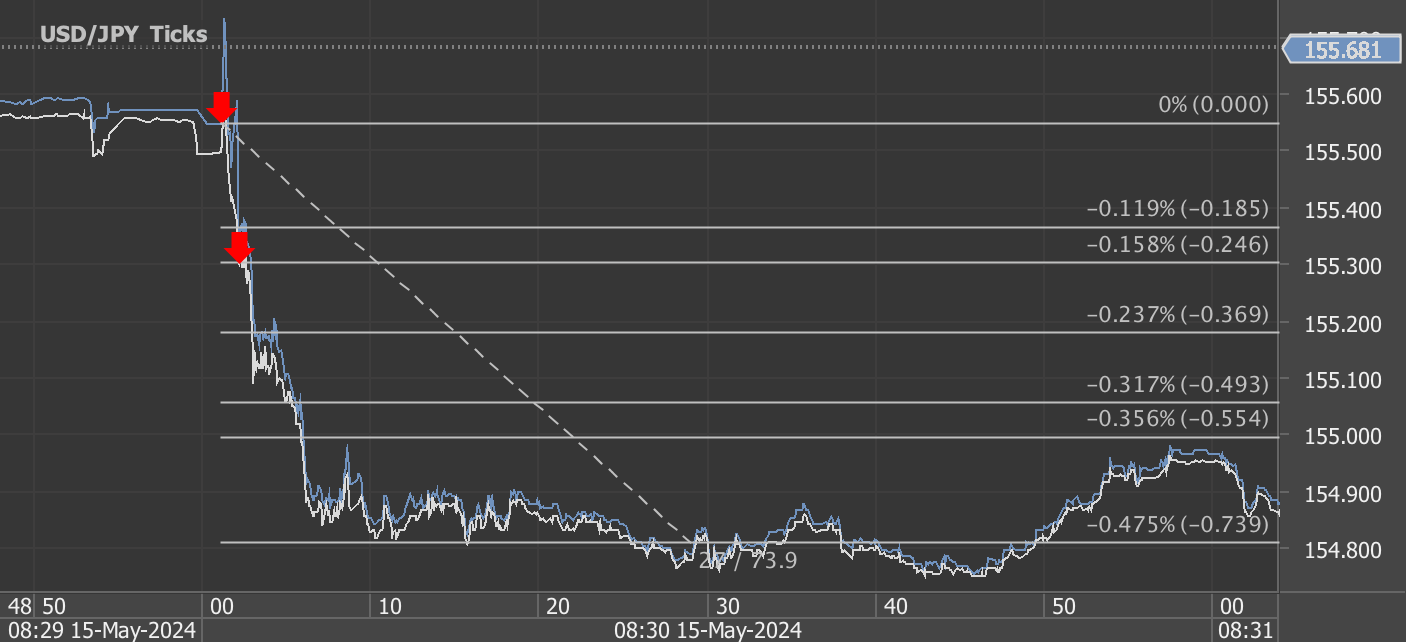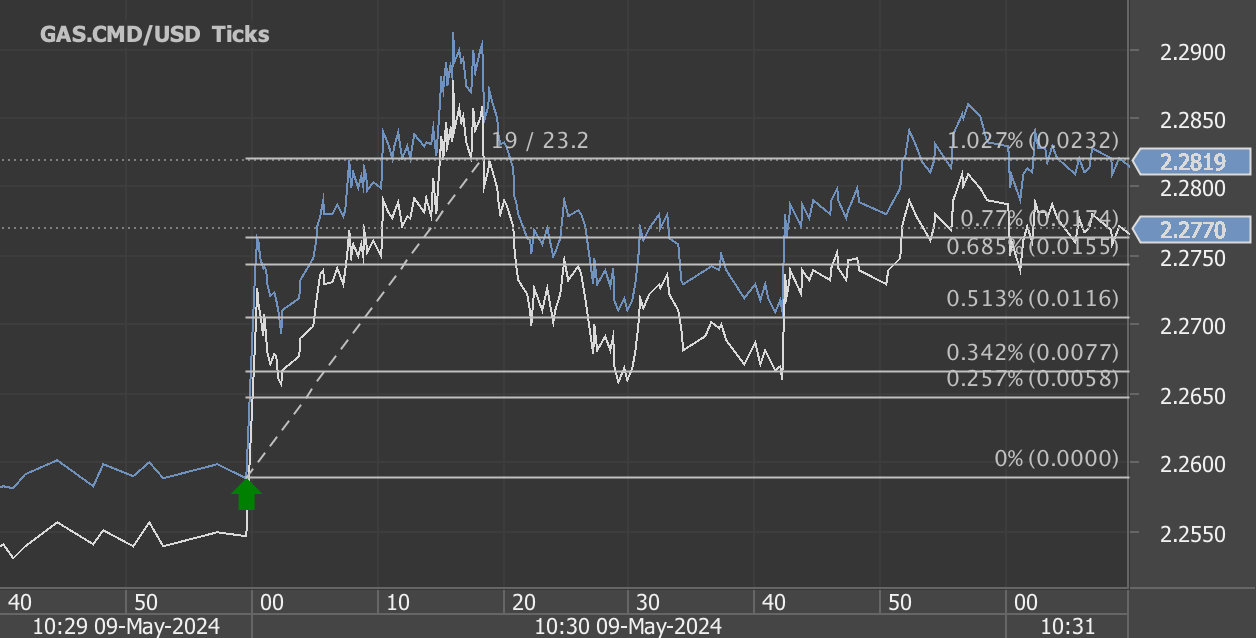According to our analysis there was a potential of 355 pips / ticks profit out of the following 9 events in May 2024. The potential performance in 2023 was 13,607 pips / ticks.
May 2024
US BLS Employment Situation (Non-farm payrolls / NFP) (77 pips / 3 May 2024)
DOE Natural Gas Storage Report (23 ticks / 9 May 2024)
US BLS Producer Price Index (PPI) (12 pips / 14 May 2024)
US Retail Sales and US BLS Consumer Price Index (CPI) (104 pips / 15 May 2024)
DOE Petroleum Status Report (33 ticks / 15 May 2024)
US Philadelphia Federal Reserve Bank Manufacturing Business Outlook Survey (17 pips / 16 May 2024)
DOE Natural Gas Storage Report (24 ticks / 16 May 2024)
DOE Natural Gas Storage Report (45 ticks / 23 May 2024)
US BEA Personal Income and Outlays (20 pips / 31 May 2024)
Total trading time would have been around 5 minutes! (preparation time not included)
Analyzing May 2024's Economic Reports: Impacts and Insights
In May 2024, several significant economic reports released by U.S. agencies and other entities have made waves across the financial markets, reflecting the ongoing fluctuations and trends in the economy. Here’s a detailed look at some of the key reports and their impacts on trading activities:
1. US BLS Employment Situation (Non-farm payrolls/NFP) - May 3, 2024
The Non-farm Payrolls (NFP) reported a movement of 77 pips, indicating a volatile reaction from the markets. This data, crucial for understanding employment trends excluding farm workers and a few other job categories, often serves as a barometer for overall economic health. A higher or lower than expected number can indicate the pace at which the economy is either adding or losing jobs, influencing Federal Reserve policy decisions.
2. DOE Natural Gas Storage Report - May 9, 2024
This weekly report showed a movement of 23 ticks. Natural gas storage levels can significantly affect natural gas prices, influencing energy stocks and sectors related to utilities and manufacturing that are heavy energy consumers.
3. US BLS Producer Price Index (PPI) - May 14, 2024
The Producer Price Index, which measures the average change over time in the selling prices received by domestic producers for their output, moved by 12 pips. This lesser movement suggests a relatively stable perception of producer inflation, which can preempt consumer inflation trends.
4. US Retail Sales and US BLS Consumer Price Index (CPI) - May 15, 2024
A significant movement of 104 pips was observed, underscoring the importance of these metrics. Retail sales directly reflect consumer spending health, while CPI is a direct measure of consumer inflation. Together, they provide a comprehensive picture of the economic backdrop, influencing monetary policy and investor sentiment.
5. DOE Petroleum Status Report - May 15, 2024
Recording a movement of 33 ticks, this report provides insights into the supply-and-demand dynamics of the petroleum market, influencing not only energy prices but also economic expectations globally, given the pivotal role of oil in the world economy.
6. US Philadelphia Federal Reserve Bank Manufacturing Business Outlook Survey - May 16, 2024
The Philly Fed index, moving 17 pips, reflects the health of the manufacturing sector in the Philadelphia Fed's region. It’s a leading indicator of economic health—manufacturers being more responsive to changes in the business cycle.
7. DOE Natural Gas Storage Reports - May 16 & 23, 2024
Further reports on natural gas storage recorded movements of 24 and 45 ticks respectively. These reports reflect adjustments in market strategies and expectations concerning energy consumption and pricing.
8. US BEA Personal Income and Outlays - May 31, 2024
Finally, a 20 pip movement was seen in this report, which details personal income and consumer spending. This data is critical for gauging consumer capability and willingness to spend, directly feeding into expectations on economic growth trajectories.
Conclusion
Each report in May 2024 painted part of a broader economic picture, helping market participants gauge the tempo of economic activity and inflationary pressures. The movements in pips and ticks post-report release indicate the market's sensitivity to economic signals and can guide investors, policymakers, and analysts in making informed decisions. As we move forward, keeping an eye on these indicators will remain crucial in understanding the evolving economic landscape.
Disclaimer: This blog post is for informational purposes only and should not be construed as financial advice. Always conduct thorough research and consider seeking advice from a financial professional before making any investment decisions.
Start futures/forex/oil/grains news trading with Haawks G4A low latency machine-readable data today, we offer one of the fastest machine-readable data feeds for US macro-economic and commodity data and macro-economic data from Norway, Sweden, Turkey, Switzerland and ECB interest rates and statement.
Please let us know your feedback and check out our G4A low latency data feed.
All data is machine readable and available via API access in Aurora, CH1, NY4 and LD4. Free trials.
















